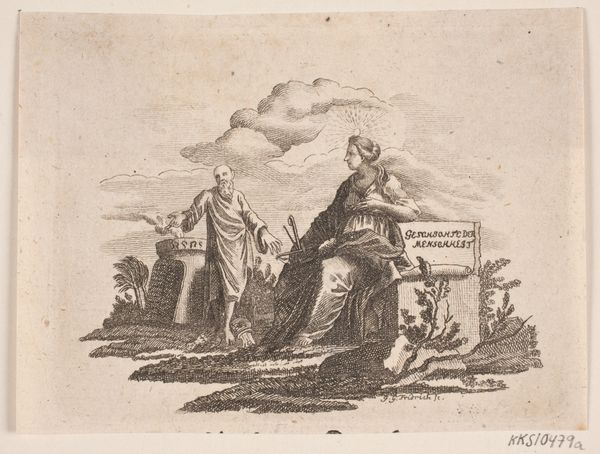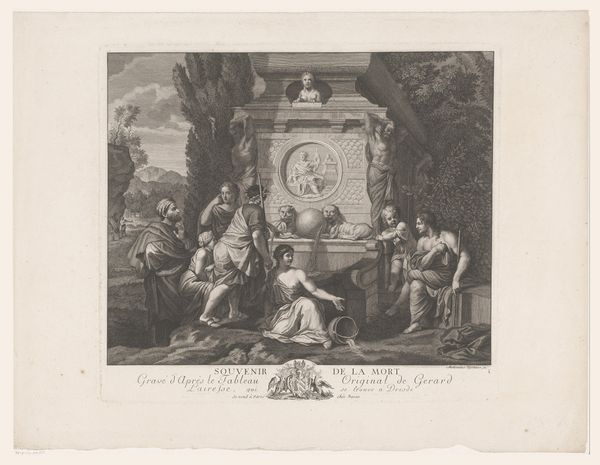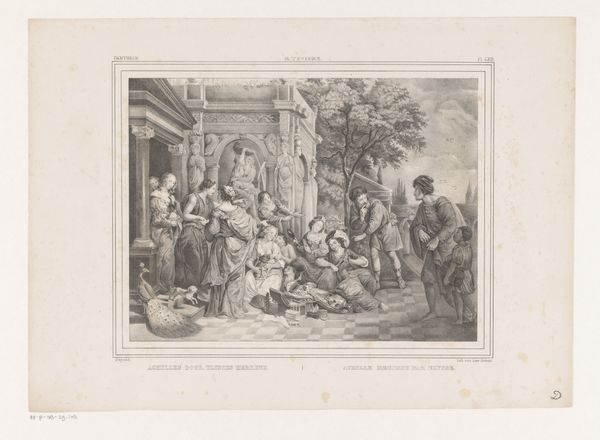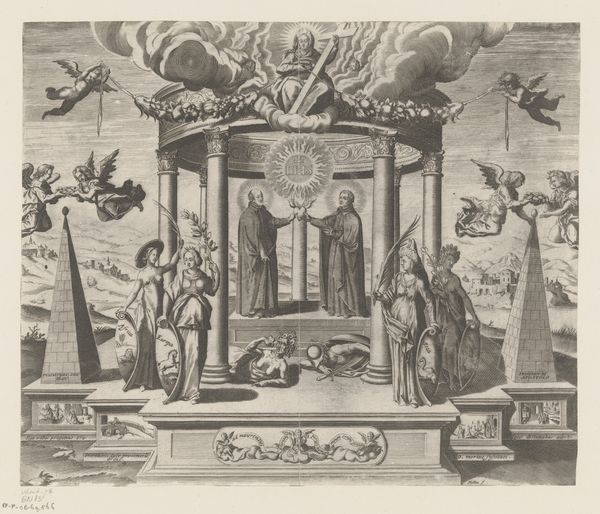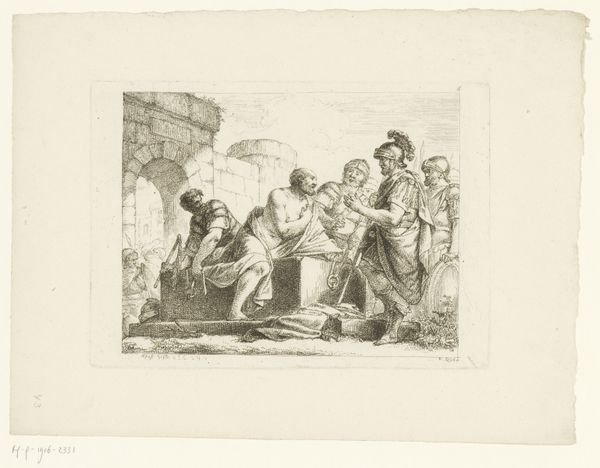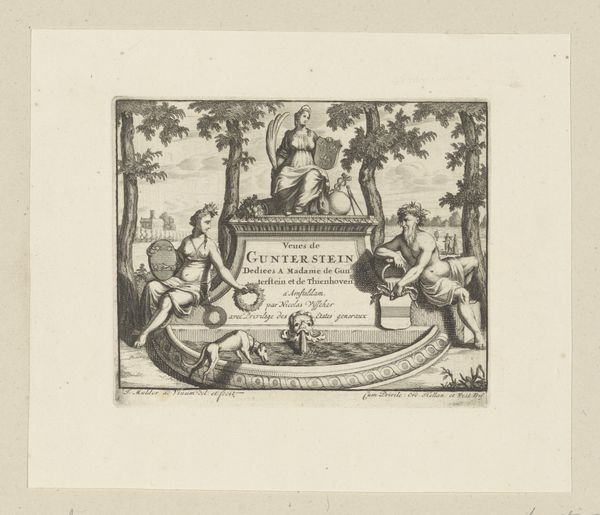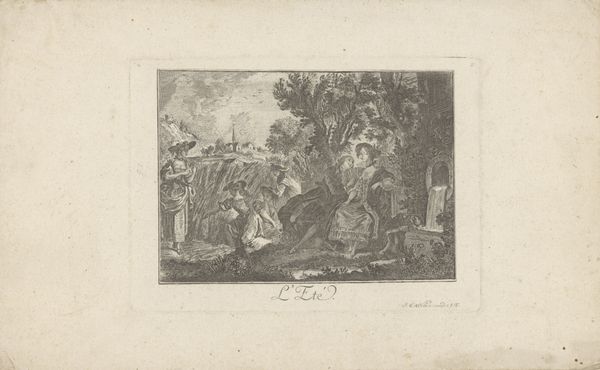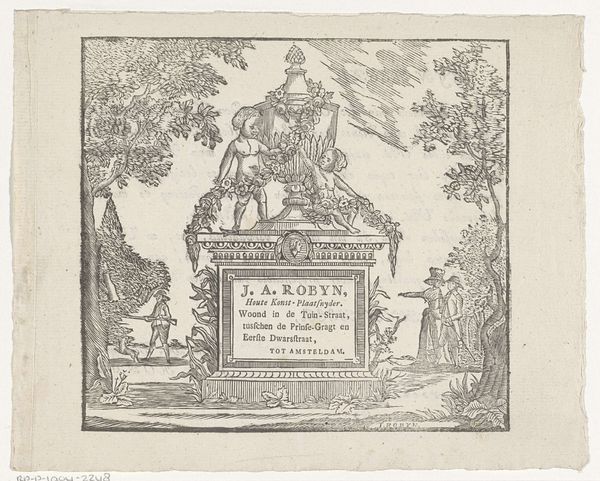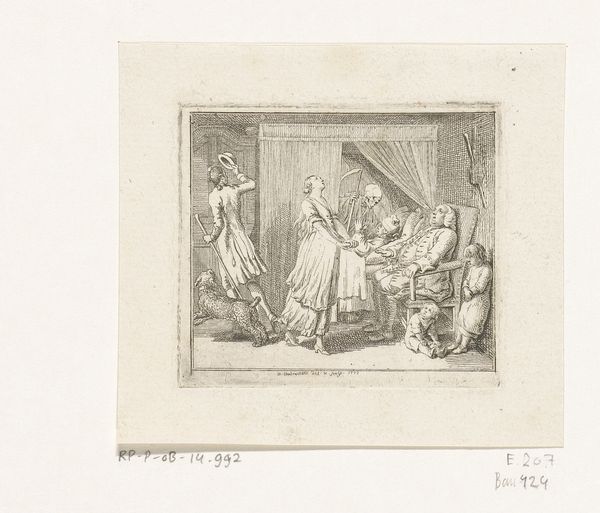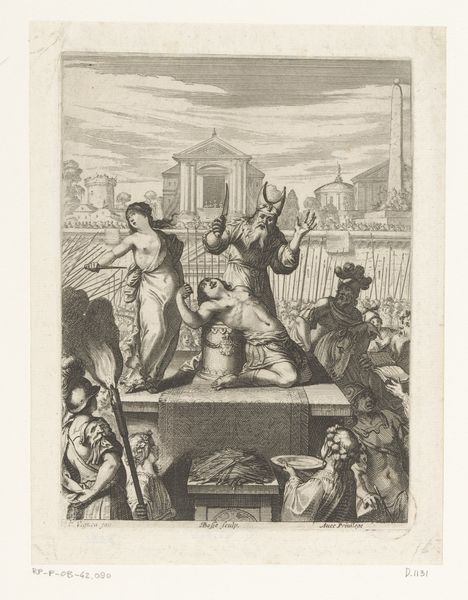
Dimensions: height 55 mm, width 90 mm
Copyright: Rijks Museum: Open Domain
Editor: This is "Mourning Figures by a Sarcophagus" by Reinier Vinkeles, made sometime between 1751 and 1816. It’s an engraving, so mostly lines, depicting grieving figures. The overall mood is somber, even melodramatic. What kind of narratives do you see being represented here? Curator: This piece is fascinating when considering its Neoclassical context. It leans heavily on the visual language of mourning and the heroic. Neoclassicism, of course, was very invested in idealizing the past. Think about how this idealized representation of grief and mourning potentially silences more authentic experiences of loss for people. Does the artist seem to be glorifying something through an excess of emotion? Editor: I hadn’t thought of it that way! It feels almost staged now that you mention it. Like, "let’s perform grief in the most aesthetically pleasing way possible." Curator: Precisely! And who benefits from this aestheticization? Who is excluded or misrepresented in such performances? Are marginalized voices given a platform within this framework, or are they further silenced? What is it saying about whose grief matters? Editor: Wow, okay. Now the presence of the cherubs seems a bit…much. Like, they're props in this elaborate performance. I initially thought they symbolized innocence and the promise of life, but now it feels performative. Curator: That is right! Consider how representations of innocence, purity, and beauty have been historically weaponized to uphold oppressive structures. This becomes a fertile ground for art historians and social theorists to critically interrogate how these symbols shape cultural and political power. Now does this alter your perception of it? Editor: Completely. It goes from being a sentimental scene to a critical commentary on how grief and mourning can be manipulated for ideological purposes. Curator: Precisely! Seeing it through that lens brings to light power structures embedded in seemingly benign artistic expression. Editor: I'll definitely look at Neoclassical art differently now. Curator: Indeed, it’s crucial to see how artworks of this era aren’t just beautiful things but active participants in larger socio-political discussions.
Comments
No comments
Be the first to comment and join the conversation on the ultimate creative platform.
